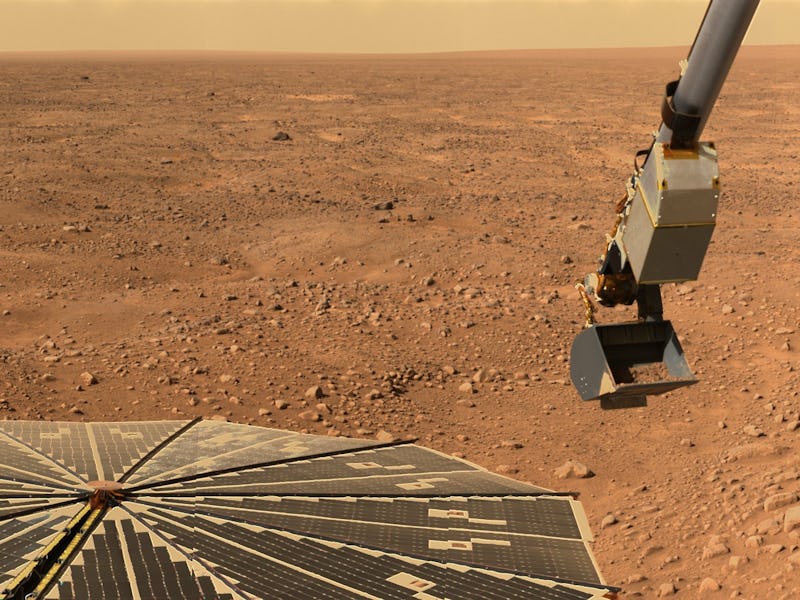The Moon Is NASA's Key to Landing Humans on Mars
The lunar surface is familiar territory.

Last week, NASA released a 35-page plan outlining how it intends to send a live crew to Mars and back before the end of the 2030s. The biggest takeaway is that NASA intends to take us back to the moon and use the Earth’s only natural satellite as a jumping-off point to get us the rest of the way to the red planet. The internet sighed, said “TL;DR,” and moved on. But the plan is worth parsing.
NASA divides their plan of action into three phases: Earth Reliant, Proving Ground, and Earth Independent. Here’s what you need to know about each one.

An infographic outlining NASA's plans to send astronauts to Mars.
Earth Reliant
This phase encompasses everything that needs to happen on Earth and the International Space Station for us to prepare for sending people to Mars, and NASA is already well under way with many of these processes. This includes having NASA astronauts live in six to 12 month rotations to study the effects of long-term survival aboard spacecraft, as well prepare potential astronauts for the long journey (like what Scott Kelly is currently doing up in the ISS during his 12-month mission).
The most important aspect of Earth Reliant is the construction of NASA’s Space Launch System, the successor to the now-retired Space Shuttle program. The 382-feet tall system will be able to send up payloads of more than 143 tons, and will be critical in sending the Orion spacecraft, its crew, and all necessary resources out beyond Earth’s orbit and deep into interstellar space. The SLS is expected to be completed by 2017.
Proving Ground
The second phase is quite possibly the most important — it’s where NASA must show it can confidently send astronauts to Mars and get them back to Earth safely. That’s where the moon comes in. NASA scientists plan to use the moon itself as a proving ground to test plans to get to the Earth. This includes the Asteroid Redirect Mission targeted for sometime around 2020, where a robotic spacecraft would pull a boulder off a near-Earth asteroid, drop it into lunar orbit, and give a future Orion crew a chance to…do something with it, by 2025. NASA’s still working that out. Details TBA.
But the broader goal of the Asteroid Redirect Mission is to demonstrate that a robotic probe can haul big payloads to Mars and drop them into Martian orbit. This is extremely important because it would mean that a crew on the way to the red planet doesn’t need to store everything they will need for a few years onboard. They just need enough to get to the planet and access what would be a deep-space storage facility orbiting Mars — lightening the load on the craft and allowing them to use fuel and energy resources more efficiently.
Furthermore, NASA is looking into using asteroids as potential sources of mined water that could be used as an alternative method of propulsion, which would help a Mars-bound crew conserve fuel. Those plans are still far off from feasibility, but the Asteroid Redirect Mission would be perfect for laying out the groundwork for such tests.
Earth Independent
The last phase of the plan is, more or less, when astronauts actually get to Mars and begin establishing buildings and infrastructure that can support human life on the surface of the planet. NASA wants to set up a permanent outpost that would be more-or-less constructed and maintained using resources found on Mars. That means unlike the ISS, the Mars colony would be mostly self-reliant and not require regular shipments of resources and equipment from Earth.
Ultimately, a lot of things have to go right for astronauts to get to Mars. Without a doubt, NASA will hit some snags that will cause delays or even outright force the space agency to change tactics. They have roughly two decades to get it right. Space is hard, but the 57-year-old agency is up for the challenge.